Grow Cilantro Indoors? Absolutely! Imagine fresh, vibrant cilantro always at your fingertips, ready to elevate your tacos, salads, and salsas. No more sad, wilted bunches from the grocery store! For centuries, cilantro, also known as coriander in some parts of the world, has been a staple in cuisines across the globe, from Mexican and Thai to Indian and Middle Eastern. Its bright, citrusy flavor is simply irreplaceable.
But let’s face it, growing cilantro can be tricky. It’s notorious for bolting (going to seed) quickly, especially in hot weather. That’s where the magic of indoor gardening comes in! I’m here to share some simple, effective DIY tricks and hacks that will help you grow cilantro indoors successfully, regardless of your outdoor climate or gardening experience.
This isn’t just about having fresh herbs; it’s about connecting with nature, reducing your carbon footprint, and enjoying the satisfaction of growing your own food. Plus, who doesn’t love a little greenery brightening up their kitchen windowsill? So, grab your pots, soil, and cilantro seeds, and let’s get started on this exciting indoor gardening adventure together! I promise, with these tips, you’ll be enjoying a bountiful harvest of fresh cilantro in no time.
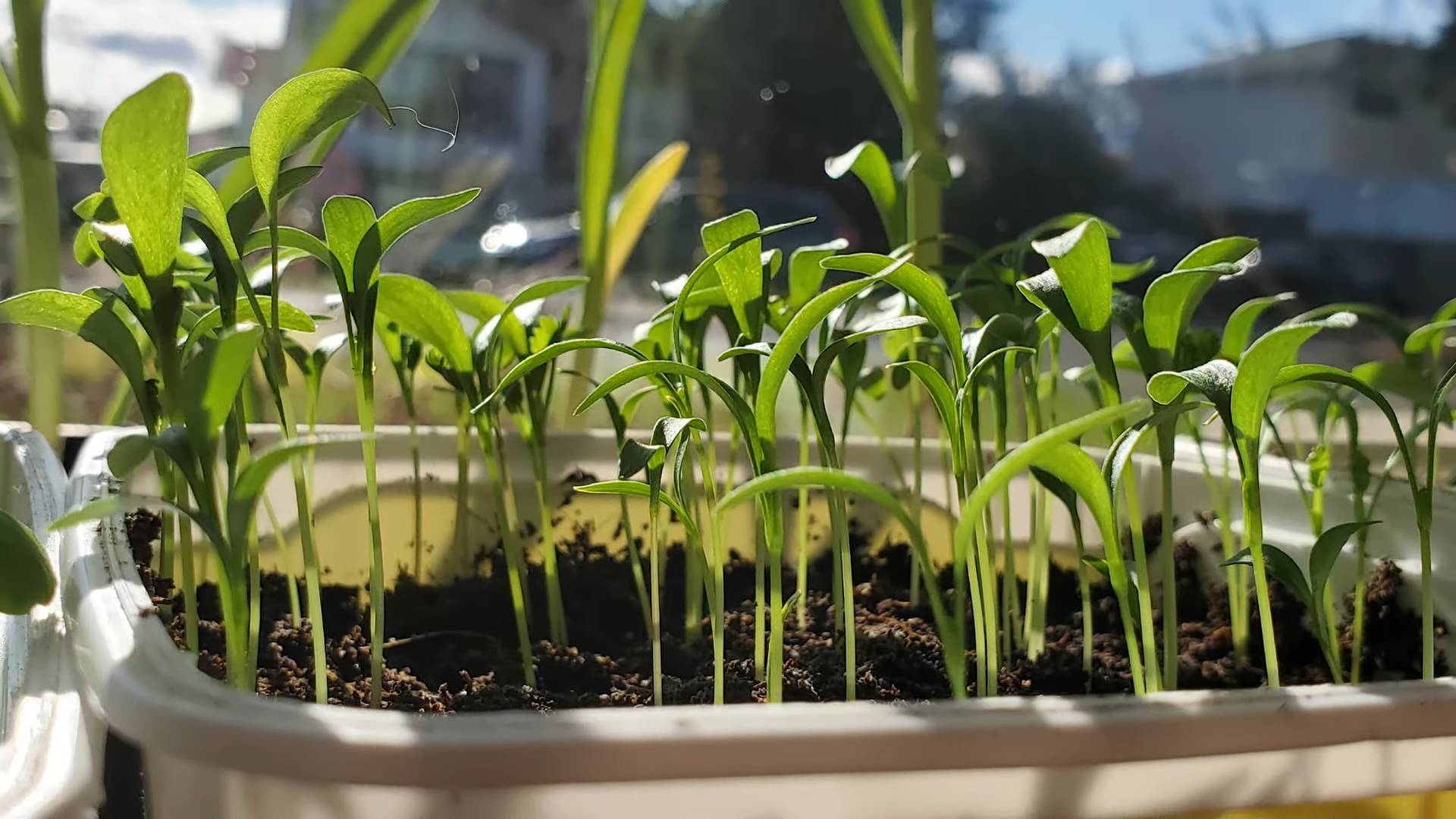
Grow Your Own Cilantro Indoors: A Beginner’s Guide
Hey there, fellow herb enthusiasts! Ever find yourself needing just a sprig of cilantro for your tacos, only to realize you’re fresh out? I’ve been there, and that’s why I decided to take matters into my own hands (literally!) and grow my own cilantro indoors. It’s surprisingly easy, and having fresh cilantro at your fingertips is a game-changer. Let me walk you through everything you need to know to get started.
What You’ll Need
Before we dive in, let’s gather our supplies. Here’s a checklist to make sure you’re ready to go:
* **Cilantro Seeds:** You can find these at most garden centers or online. Make sure they are fresh for best germination rates.
* **Potting Mix:** Use a well-draining potting mix specifically designed for containers. Avoid using garden soil, as it can compact and hinder drainage.
* **Container:** Choose a pot that’s at least 6 inches deep and wide. Cilantro has a taproot, so depth is important. Make sure it has drainage holes!
* **Grow Light (Optional but Recommended):** While cilantro can grow indoors with natural light, a grow light will ensure consistent growth, especially during the darker months.
* **Watering Can or Spray Bottle:** For gentle watering.
* **Small Shovel or Trowel:** For planting the seeds.
* **Spray Bottle with Water:** For misting the soil.
* **Patience:** Cilantro can be a bit finicky, but don’t give up!
Choosing the Right Cilantro Variety
While most cilantro varieties will grow indoors, some are better suited than others. Look for varieties that are slow to bolt (go to seed), as bolting will make the leaves bitter. ‘Slow Bolt’ or ‘Long Standing’ varieties are excellent choices. I’ve had good luck with ‘Santo’ cilantro as well.
Planting Your Cilantro Seeds
Okay, let’s get our hands dirty! This is the fun part.
1. **Prepare the Pot:** Fill your chosen container with potting mix, leaving about an inch of space at the top. Gently pat down the soil to remove any large air pockets.
2. **Sow the Seeds:** Cilantro seeds have a hard outer shell, so soaking them in water for 24 hours before planting can improve germination rates. I usually skip this step, but if you’re having trouble getting your seeds to sprout, it’s worth a try. Scatter the seeds evenly over the surface of the soil. You can plant them fairly densely, as you’ll be thinning them out later.
3. **Cover the Seeds:** Lightly cover the seeds with about ¼ inch of potting mix. Gently pat down the soil again.
4. **Water Thoroughly:** Use a watering can or spray bottle to thoroughly moisten the soil. Be careful not to dislodge the seeds. The soil should be damp but not soggy.
5. **Create a Humid Environment:** Cilantro seeds germinate best in a humid environment. You can create this by covering the pot with a clear plastic bag or plastic wrap. Make sure to poke a few holes in the plastic for ventilation.
6. **Place in a Warm Location:** Place the pot in a warm location, ideally around 65-70°F (18-21°C). Avoid direct sunlight at this stage, as it can overheat the soil.
Germination and Early Care
Now comes the waiting game! Germination typically takes 7-14 days, but it can sometimes take longer.
1. **Monitor Moisture Levels:** Check the soil moisture daily. Keep the soil consistently moist, but not waterlogged. Use a spray bottle to mist the soil as needed.
2. **Remove the Plastic Covering:** Once the seedlings emerge, remove the plastic covering.
3. **Provide Adequate Light:** Place the pot in a location that receives at least 6 hours of direct sunlight per day. If you don’t have enough natural light, use a grow light. I use a simple LED grow light that I got online, and it works wonders. Position the light a few inches above the seedlings.
4. **Thin the Seedlings:** Once the seedlings have developed a few sets of true leaves (the leaves that look like miniature cilantro leaves), thin them out. This means removing some of the seedlings to give the remaining ones more space to grow. Aim for a spacing of about 2-3 inches between plants. Don’t just pull them out; gently snip them off at the soil line to avoid disturbing the roots of the remaining plants.
Ongoing Care and Maintenance
Congratulations, you’ve got cilantro seedlings! Now, let’s keep them happy and healthy.
1. **Watering:** Water your cilantro regularly, keeping the soil consistently moist but not soggy. Overwatering can lead to root rot, so be careful. I usually water when the top inch of soil feels dry to the touch.
2. **Fertilizing:** Cilantro is a light feeder, so you don’t need to fertilize it heavily. However, a light feeding every few weeks can help promote growth. Use a balanced liquid fertilizer diluted to half strength.
3. **Pinching Back:** To encourage bushier growth, pinch back the tips of the stems regularly. This will also delay bolting.
4. **Preventing Bolting:** Bolting is when the cilantro plant starts to produce flowers and seeds. This makes the leaves bitter and less palatable. To prevent bolting, keep the plant cool and well-watered. Avoid letting the soil dry out completely. If you see flower buds forming, pinch them off immediately.
5. **Pest Control:** Cilantro is generally pest-resistant, but occasionally you may encounter aphids or spider mites. If you notice any pests, try spraying the plant with a strong stream of water. You can also use insecticidal soap or neem oil, following the instructions on the label.
Harvesting Your Cilantro
The best part! You can start harvesting your cilantro once the plants are about 6 inches tall.
1. **Harvesting Technique:** Use scissors or pruning shears to snip off the outer leaves, leaving the inner leaves to continue growing. Avoid cutting more than one-third of the plant at a time.
2. **Harvesting Frequency:** You can harvest cilantro regularly, as needed. The more you harvest, the more the plant will produce.
3. **Extending the Harvest:** Cilantro is an annual plant, meaning it will eventually go to seed and die. To extend the harvest, sow new seeds every few weeks. This will ensure a continuous supply of fresh cilantro.
Troubleshooting
Even with the best care, you may encounter some challenges when growing cilantro indoors. Here are some common problems and how to fix them:
* **Yellowing Leaves:** This can be caused by overwatering, underwatering, or nutrient deficiencies. Check the soil moisture and adjust your watering accordingly. If the soil is consistently moist, reduce watering. If the soil is dry, water more frequently. You can also try fertilizing the plant with a balanced liquid fertilizer.
* **Leggy Growth:** This is usually caused by insufficient light. Move the plant to a location that receives more sunlight or use a grow light.
* **Bolting:** As mentioned earlier, bolting is when the plant starts to produce flowers and seeds. To prevent bolting, keep the plant cool and well-watered. Avoid letting the soil dry out completely. If you see flower buds forming, pinch them off immediately.
* **Slow Growth:** This can be caused by a variety of factors, including insufficient light, poor soil, or nutrient deficiencies. Make sure the plant is receiving enough light and that the soil is well-draining. You can also try fertilizing the plant with a balanced liquid fertilizer.
Extra Tips for Success
Here are a few extra tips that I’ve learned along the way:
* **Rotate the Pot:** Rotate the pot regularly to ensure that all sides of the plant receive equal amounts of light.
* **Provide Good Air Circulation:** Good air circulation helps prevent fungal diseases. Make sure the plant is not overcrowded and that there is adequate space between plants.
* **Don’t Overcrowd:** Give your cilantro plants enough space to grow. Overcrowding can lead to stunted growth and increased susceptibility to pests and diseases.
* Be Patient! Cilantro can be a bit finicky, so don’t get discouraged if you don’t see results immediately. With a little patience and care, you’ll be enjoying fresh, homegrown cilantro in no time.
Hey there, fellow herb enthusiasts! Ever find yourself needing just a sprig of cilantro for your tacos, only to realize you’re fresh out? I’ve been there, and that’s why I decided to take matters into my own hands (literally!) and grow my own cilantro indoors. It’s surprisingly easy, and having fresh cilantro at your fingertips is a game-changer. Let me walk you through everything you need to know to get started.
What You’ll Need
Before we dive in, let’s gather our supplies. Here’s a checklist to make sure you’re ready to go:
* **Cilantro Seeds:** You can find these at most garden centers or online. Make sure they are fresh for best germination rates.
* **Potting Mix:** Use a well-draining potting mix specifically designed for containers. Avoid using garden soil, as it can compact and hinder drainage.
* **Container:** Choose a pot that’s at least 6 inches deep and wide. Cilantro has a taproot, so depth is important. Make sure it has drainage holes!
* **Grow Light (Optional but Recommended):** While cilantro can grow indoors with natural light, a grow light will ensure consistent growth, especially during the darker months.
* **Watering Can or Spray Bottle:** For gentle watering.
* **Small Shovel or Trowel:** For planting the seeds.
* **Spray Bottle with Water:** For misting the soil.
* **Patience:** Cilantro can be a bit finicky, but don’t give up!
Choosing the Right Cilantro Variety
While most cilantro varieties will grow indoors, some are better suited than others. Look for varieties that are slow to bolt (go to seed), as bolting will make the leaves bitter. ‘Slow Bolt’ or ‘Long Standing’ varieties are excellent choices. I’ve had good luck with ‘Santo’ cilantro as well.
Planting Your Cilantro Seeds
Okay, let’s get our hands dirty! This is the fun part.
1. **Prepare the Pot:** Fill your chosen container with potting mix, leaving about an inch of space at the top. Gently pat down the soil to remove any large air pockets.
2. **Sow the Seeds:** Cilantro seeds have a hard outer shell, so soaking them in water for 24 hours before planting can improve germination rates. I usually skip this step, but if you’re having trouble getting your seeds to sprout, it’s worth a try. Scatter the seeds evenly over the surface of the soil. You can plant them fairly densely, as you’ll be thinning them out later.
3. **Cover the Seeds:** Lightly cover the seeds with about ¼ inch of potting mix. Gently pat down the soil again.
4. **Water Thoroughly:** Use a watering can or spray bottle to thoroughly moisten the soil. Be careful not to dislodge the seeds. The soil should be damp but not soggy.
5. **Create a Humid Environment:** Cilantro seeds germinate best in a humid environment. You can create this by covering the pot with a clear plastic bag or plastic wrap. Make sure to poke a few holes in the plastic for ventilation.
6. **Place in a Warm Location:** Place the pot in a warm location, ideally around 65-70°F (18-21°C). Avoid direct sunlight at this stage, as it can overheat the soil.
Germination and Early Care
Now comes the waiting game! Germination typically takes 7-14 days, but it can sometimes take longer.
1. **Monitor Moisture Levels:** Check the soil moisture daily. Keep the soil consistently moist, but not waterlogged. Use a spray bottle to mist the soil as needed.
2. **Remove the Plastic Covering:** Once the seedlings emerge, remove the plastic covering.
3. **Provide Adequate Light:** Place the pot in a location that receives at least 6 hours of direct sunlight per day. If you don’t have enough natural light, use a grow light. I use a simple LED grow light that I got online, and it works wonders. Position the light a few inches above the seedlings.
4. **Thin the Seedlings:** Once the seedlings have developed a few sets of true leaves (the leaves that look like miniature cilantro leaves), thin them out. This means removing some of the seedlings to give the remaining ones more space to grow. Aim for a spacing of about 2-3 inches between plants. Don’t just pull them out; gently snip them off at the soil line to avoid disturbing the roots of the remaining plants.
Ongoing Care and Maintenance
Congratulations, you’ve got cilantro seedlings! Now, let’s keep them happy and healthy.
1. **Watering:** Water your cilantro regularly, keeping the soil consistently moist but not soggy. Overwatering can lead to root rot, so be careful. I usually water when the top inch of soil feels dry to the touch.
2. **Fertilizing:** Cilantro is a light feeder, so you don’t need to fertilize it heavily. However, a light feeding every few weeks can help promote growth. Use a balanced liquid fertilizer diluted to half strength.
3. **Pinching Back:** To encourage bushier growth, pinch back the tips of the stems regularly. This will also delay bolting.
4. **Preventing Bolting:** Bolting is when the cilantro plant starts to produce flowers and seeds. This makes the leaves bitter and less palatable. To prevent bolting, keep the plant cool and well-watered. Avoid letting the soil dry out completely. If you see flower buds forming, pinch them off immediately.
5. **Pest Control:** Cilantro is generally pest-resistant, but occasionally you may encounter aphids or spider mites. If you notice any pests, try spraying the plant with a strong stream of water. You can also use insecticidal soap or neem oil, following the instructions on the label.
Harvesting Your Cilantro
The best part! You can start harvesting your cilantro once the plants are about 6 inches tall.
1. **Harvesting Technique:** Use scissors or pruning shears to snip off the outer leaves, leaving the inner leaves to continue growing. Avoid cutting more than one-third of the plant at a time.
2. **Harvesting Frequency:** You can harvest cilantro regularly, as needed. The more you harvest, the more the plant will produce.
3. **Extending the Harvest:** Cilantro is an annual plant, meaning it will eventually go to seed and die. To extend the harvest, sow new seeds every few weeks. This will ensure a continuous supply of fresh cilantro.
Troubleshooting
Even with the best care, you may encounter some challenges when growing cilantro indoors. Here are some common problems and how to fix them:
* **Yellowing Leaves:** This can be caused by overwatering, underwatering, or nutrient deficiencies. Check the soil moisture and adjust your watering accordingly. If the soil is consistently moist, reduce watering. If the soil is dry, water more frequently. You can also try fertilizing the plant with a balanced liquid fertilizer.
* **Leggy Growth:** This is usually caused by insufficient light. Move the plant to a location that receives more sunlight or use a grow light.
* **Bolting:** As mentioned earlier, bolting is when the plant starts to produce flowers and seeds. To prevent bolting, keep the plant cool and well-watered. Avoid letting the soil dry out completely. If you see flower buds forming, pinch them off immediately.
* **Slow Growth:** This can be caused by a variety of factors, including insufficient light, poor soil, or nutrient deficiencies. Make sure the plant is receiving enough light and that the soil is well-draining. You can also try fertilizing the plant with a balanced liquid fertilizer.
Extra Tips for Success
Here are a few extra tips that I’ve learned along the way:
* **Rotate the Pot:** Rotate the pot regularly to ensure that all sides of the plant receive equal amounts of light.
* **Provide Good Air Circulation:** Good air circulation helps prevent fungal diseases. Make sure the plant is not overcrowded and that there is adequate space between plants.
* **Don’t Overcrowd:** Give your cilantro plants enough space to grow. Overcrowding can lead to stunted growth and increased susceptibility to pests and diseases.
* Be Patient! Cilantro can be a bit finicky, so don’t get discouraged if you don’t see results immediately. With a little patience and care, you’ll be enjoying fresh, homegrown cilantro in no time.
Growing cilantro indoors is a rewarding experience. It’s a great way to have fresh herbs on hand whenever you need them, and it’s also a fun and educational project. So, give it a try! I’m sure you’ll be hooked. Happy growing!
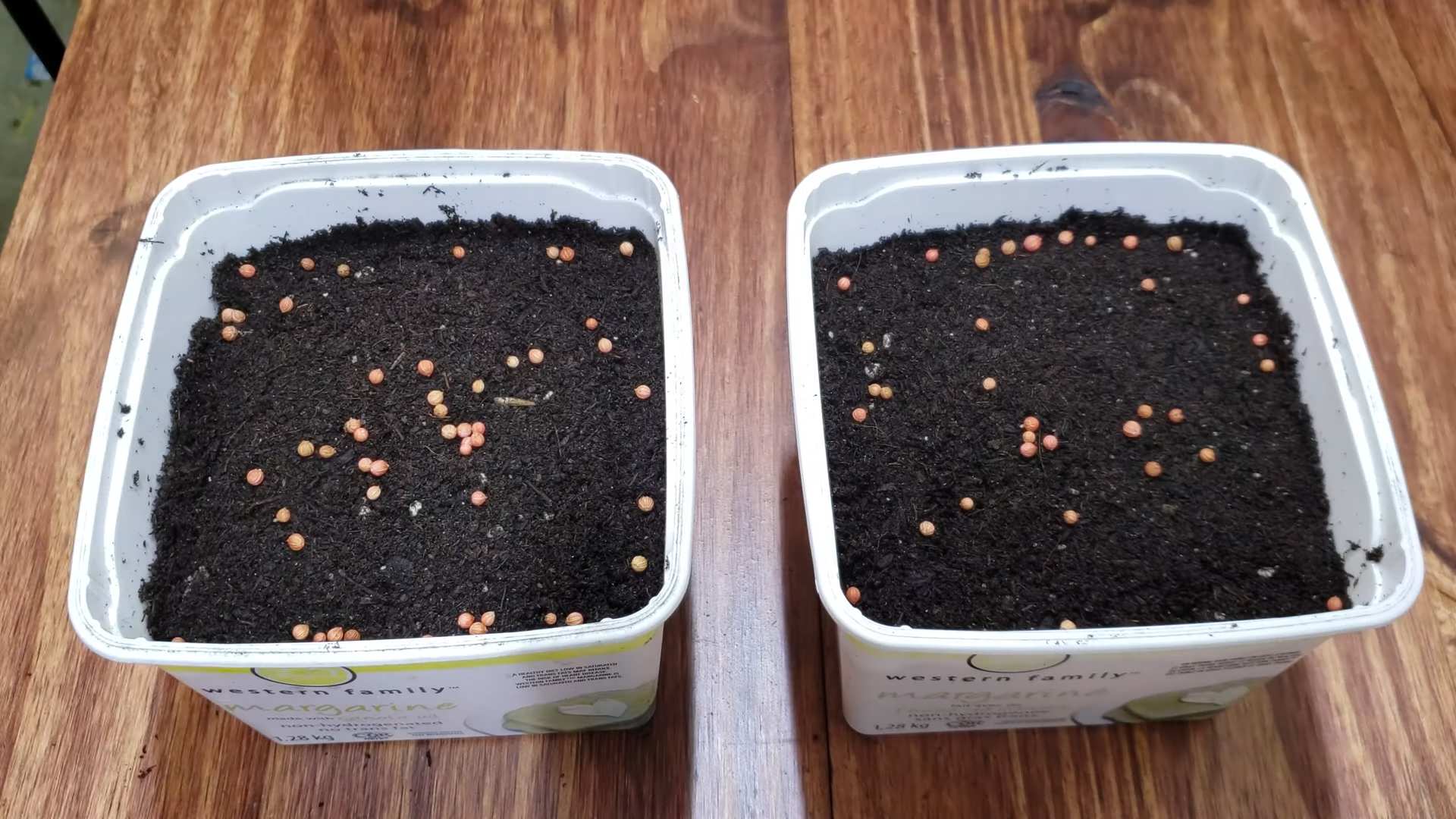
Conclusion
So, there you have it! Growing cilantro indoors is not only achievable, but it’s also a rewarding experience that brings fresh, vibrant flavor right to your fingertips. Forget those sad, wilted bunches from the grocery store – imagine snipping off exactly the amount of cilantro you need, whenever you need it, bursting with aromatic oils and that unmistakable, zesty taste.
This DIY trick is a must-try for several compelling reasons. First and foremost, it grants you control over the quality of your cilantro. You know exactly what goes into its growth – no harsh pesticides or questionable handling. Secondly, it’s incredibly convenient. No more last-minute trips to the store when you realize you’re out of cilantro mid-recipe. And finally, it’s surprisingly easy and cost-effective. With just a few simple supplies and a little bit of patience, you can have a continuous supply of fresh cilantro.
But the fun doesn’t stop there! Feel free to experiment with different varieties of cilantro. Some gardeners swear by ‘Slow Bolt’ cilantro, which is more resistant to bolting (going to seed) in warmer conditions. You can also try growing cilantro in different types of containers, from terracotta pots to self-watering planters. Consider adding companion plants like basil or parsley to your indoor herb garden for a diverse and flavorful culinary experience.
Don’t be afraid to get creative with your setup! If you’re short on windowsill space, consider investing in a grow light to ensure your cilantro receives adequate illumination. You can also use a humidity tray to create a more humid environment, which cilantro loves.
We’re confident that once you try growing cilantro indoors, you’ll be hooked. It’s a simple yet satisfying way to elevate your cooking and connect with nature, even in the heart of the city. So, grab your seeds, gather your supplies, and get ready to enjoy the freshest cilantro you’ve ever tasted.
We encourage you to embark on this green adventure and share your experiences with us! Let us know what works best for you, what challenges you encounter, and any tips or tricks you discover along the way. Your insights could help other aspiring indoor gardeners achieve cilantro success. Share your photos and stories in the comments below – we can’t wait to see your thriving indoor cilantro gardens!
Frequently Asked Questions (FAQ)
1. What is the best type of cilantro to grow indoors?
While any cilantro variety can be grown indoors, some are better suited than others. ‘Slow Bolt’ cilantro is a popular choice because it’s less prone to bolting, which means it will produce leaves for a longer period. Other good options include ‘Santo’ and ‘Delfino’. Consider your local climate and growing conditions when selecting a variety. If you live in a warmer area, choosing a bolt-resistant variety is even more crucial.
2. How much sunlight does indoor cilantro need?
Cilantro requires at least 6-8 hours of direct sunlight per day to thrive. If you don’t have a sunny windowsill, you’ll need to supplement with a grow light. Position the grow light about 6-12 inches above the plants and keep it on for 12-14 hours per day. Insufficient light will result in leggy, weak plants with poor flavor.
3. What type of soil is best for growing cilantro indoors?
Use a well-draining potting mix that’s rich in organic matter. Avoid using garden soil, as it can be too heavy and compact, hindering drainage and root growth. A good potting mix will retain moisture while allowing excess water to drain away, preventing root rot. You can also amend your potting mix with perlite or vermiculite to improve drainage.
4. How often should I water my indoor cilantro?
Water your cilantro when the top inch of soil feels dry to the touch. Avoid overwatering, as this can lead to root rot. Ensure that your pot has drainage holes to allow excess water to escape. During warmer months, you may need to water more frequently. Check the soil moisture regularly and adjust your watering schedule accordingly.
5. How do I prevent cilantro from bolting indoors?
Bolting is a common problem with cilantro, especially in warm conditions. To prevent bolting, keep the temperature cool (around 60-70°F), provide adequate moisture, and harvest the leaves regularly. Choosing a bolt-resistant variety, as mentioned earlier, is also helpful. If your cilantro starts to bolt, you can still use the flowers and seeds, which have a slightly different flavor.
6. When can I start harvesting my indoor cilantro?
You can start harvesting cilantro leaves when the plants are about 6 inches tall. Snip off the outer leaves, leaving the inner leaves to continue growing. Regular harvesting encourages the plant to produce more leaves. Avoid harvesting more than one-third of the plant at a time.
7. How do I fertilize my indoor cilantro?
Feed your cilantro with a balanced liquid fertilizer every 2-4 weeks. Follow the instructions on the fertilizer label. Avoid over-fertilizing, as this can lead to leggy growth and a decline in flavor. Organic fertilizers, such as fish emulsion or seaweed extract, are also good options.
8. What are some common pests and diseases that affect indoor cilantro?
Aphids, spider mites, and whiteflies are common pests that can affect indoor cilantro. Inspect your plants regularly and treat any infestations promptly with insecticidal soap or neem oil. Root rot is a common disease caused by overwatering. Ensure that your pot has drainage holes and avoid overwatering.
9. Can I grow cilantro from seed indoors?
Yes, you can easily grow cilantro from seed indoors. Sow the seeds directly into your potting mix, about ¼ inch deep. Keep the soil moist and warm until the seeds germinate, which usually takes about 7-10 days. Once the seedlings emerge, provide them with plenty of light.
10. How long will my indoor cilantro plant last?
With proper care, your indoor cilantro plant can last for several months. However, cilantro is an annual herb, so it will eventually bolt and go to seed. To ensure a continuous supply of fresh cilantro, sow new seeds every few weeks. This will allow you to have a succession of plants at different stages of growth.

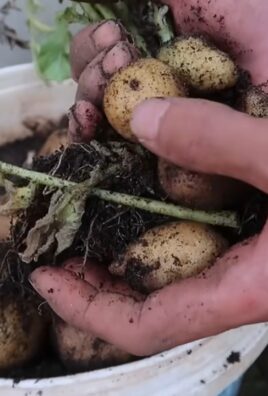
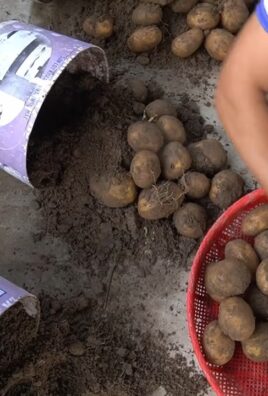
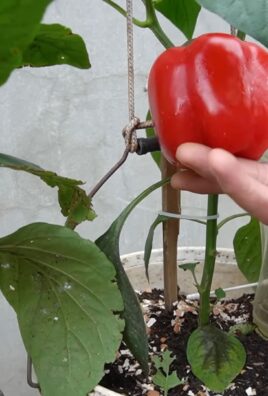
Leave a Comment